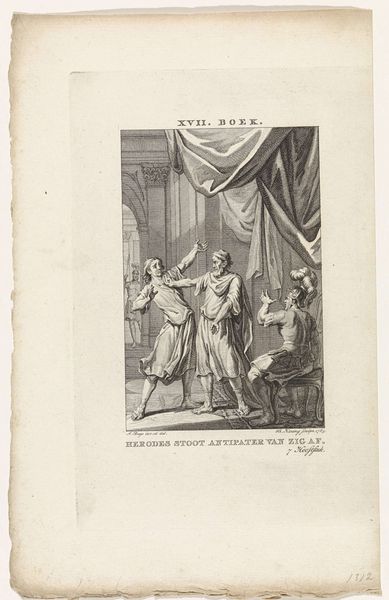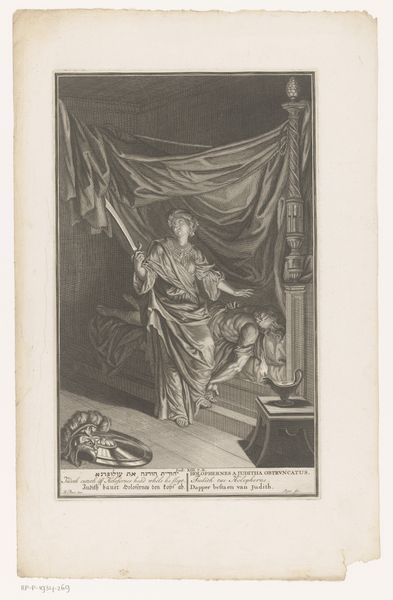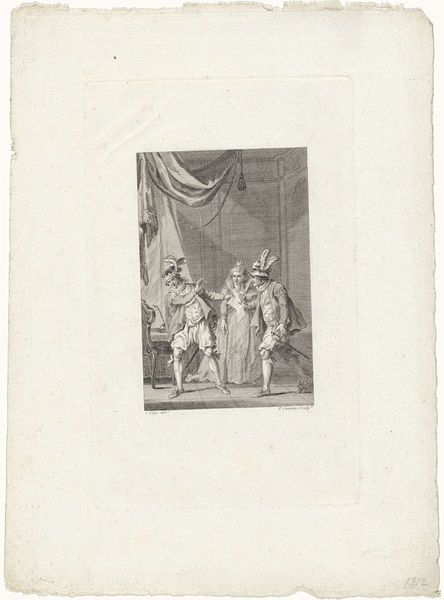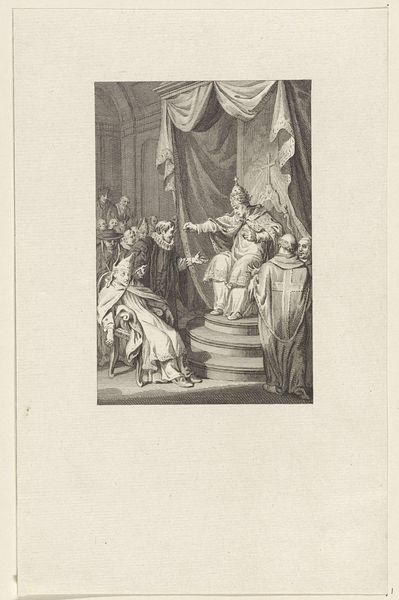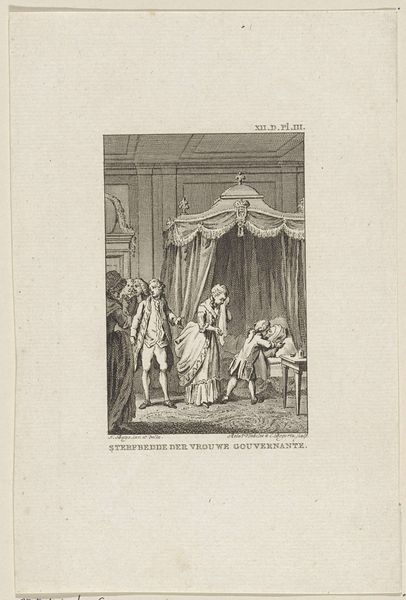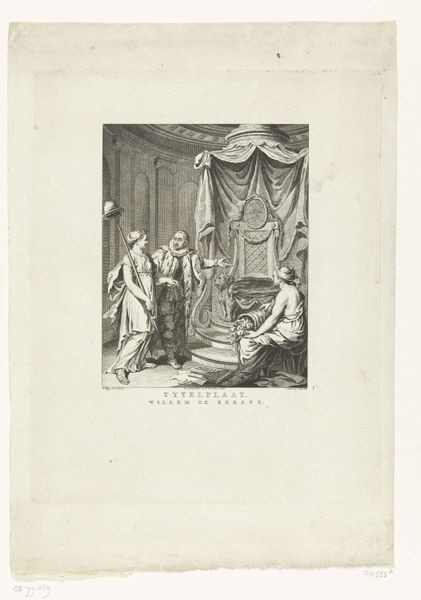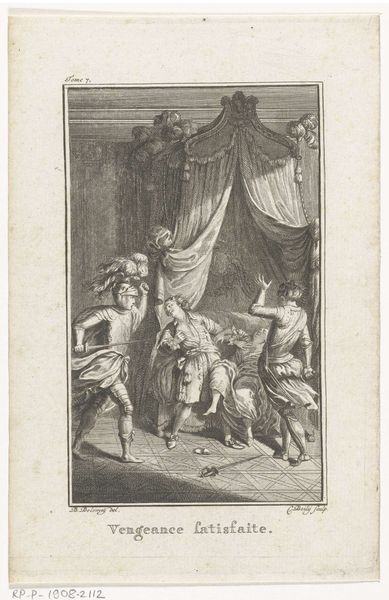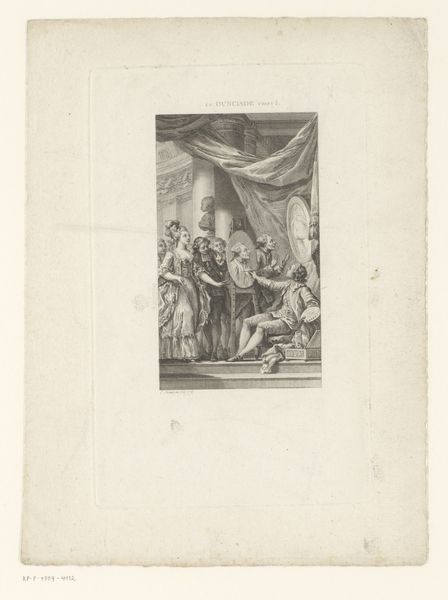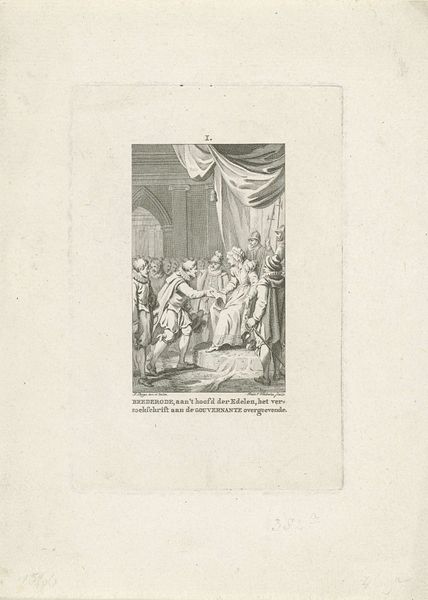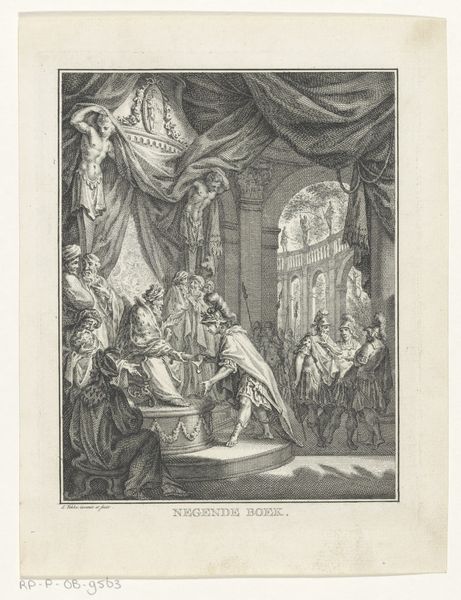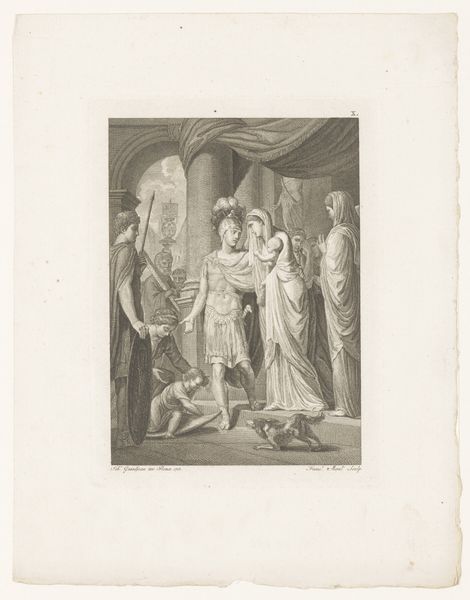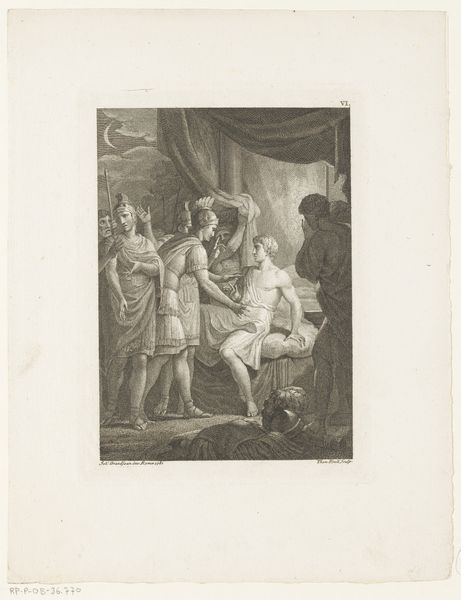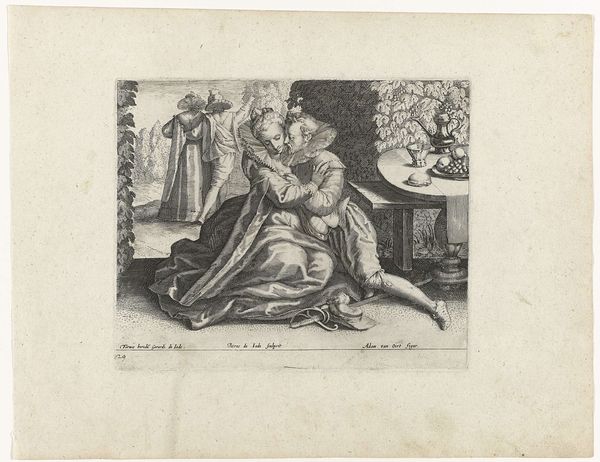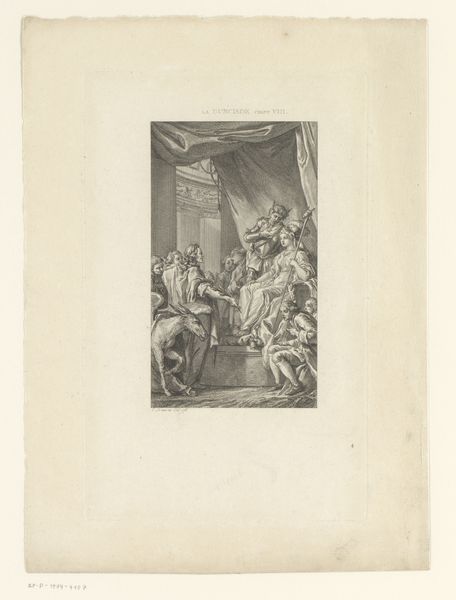
print, engraving
#
neoclacissism
# print
#
old engraving style
#
figuration
#
line
#
history-painting
#
engraving
Dimensions: height 254 mm, width 166 mm
Copyright: Rijks Museum: Open Domain
Curator: Take a look at Theodoor Koning's 1783 engraving, "Twist tussen Herodes en Mariamne," here at the Rijksmuseum. What catches your eye first? Editor: The stark contrast! The intense black lines against the pale background give the scene a dramatic, almost theatrical quality. It’s very visually arresting, in an austere kind of way. Curator: Indeed. Koning’s masterful handling of line and light, using the engraving technique, creates a distinct emotional effect, heightening the tension between Herod and Mariamne. But it's not just the visual; consider the materials. Engravings like this were often reproduced and disseminated widely. The social implication is that stories like this became accessible, shaped by, and, in turn, shaped public sentiment towards authority and morality. How might this distribution have influenced understandings of power, gender roles, or even political narratives of the era? Editor: Right, and within the composition, Mariamne’s stance, almost defiant, versus Herod's agitation… We can delve into the narrative itself. Is this about the personal struggle between these two individuals? Or about the larger societal pressures that constrained them? The engraver uses a fairly strict visual language, a kind of visual vocabulary that relates to the political order. It conveys a whole visual understanding of human behavior within these constructed, cultural boundaries. Curator: And let’s not ignore the sheer labor involved in such a detailed engraving. Each line is deliberate, carefully placed to construct this narrative. The craftsmanship speaks volumes about the value placed on storytelling, but it also reflects the exploitation of skilled labor within the production process. Where did Koning source his materials, how was he commissioned, and how did his economic status shape his artistic choices? Editor: From a formal perspective, the line quality and precision also give it this sense of historical gravitas. But thinking about those socio-economic components does prompt new angles to engage with the artwork from. Curator: Exactly. This piece serves not just as a depiction of historical drama, but as a record of production and consumption. Editor: Agreed. I now read the image with new context! Curator: A productive exchange, thank you!
Comments
No comments
Be the first to comment and join the conversation on the ultimate creative platform.
